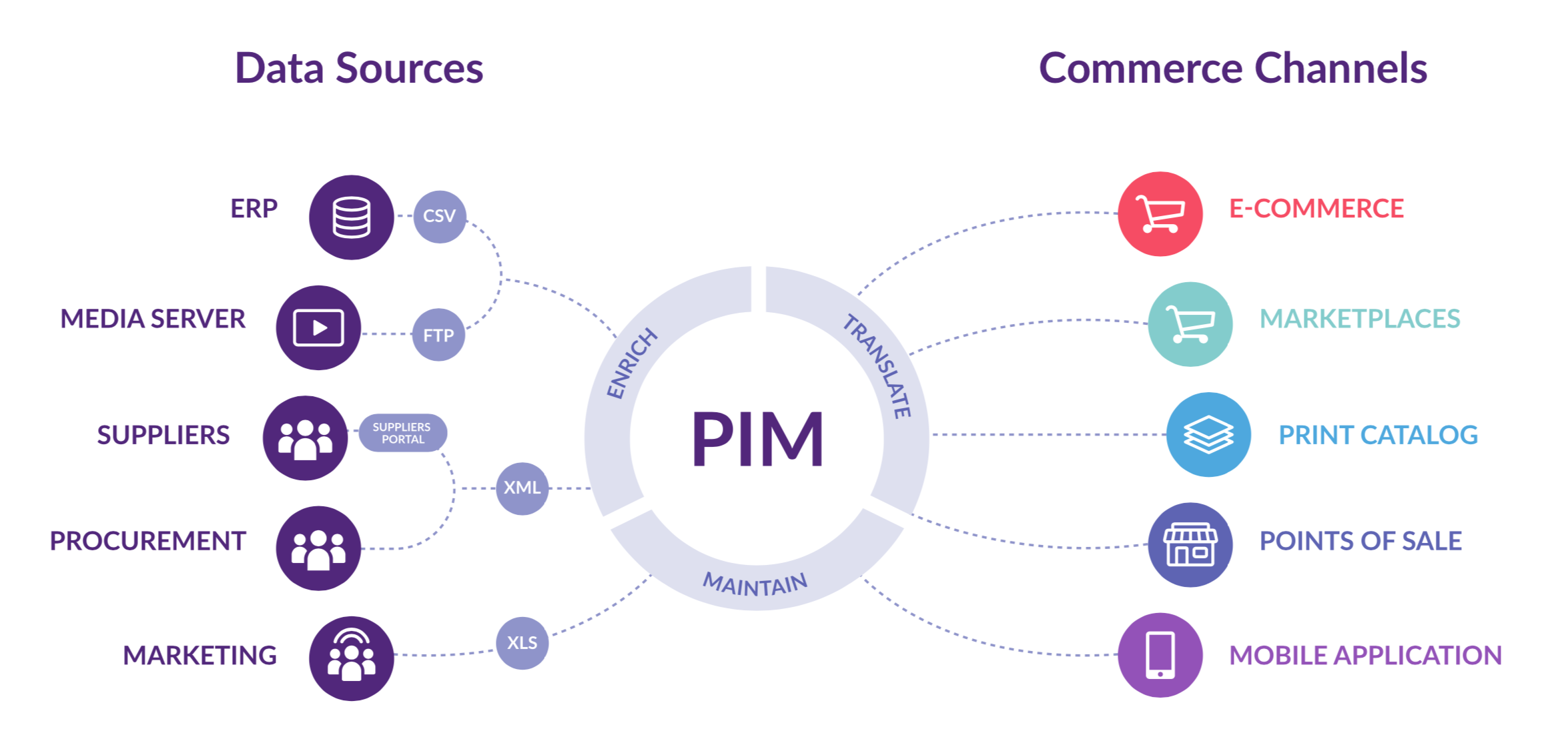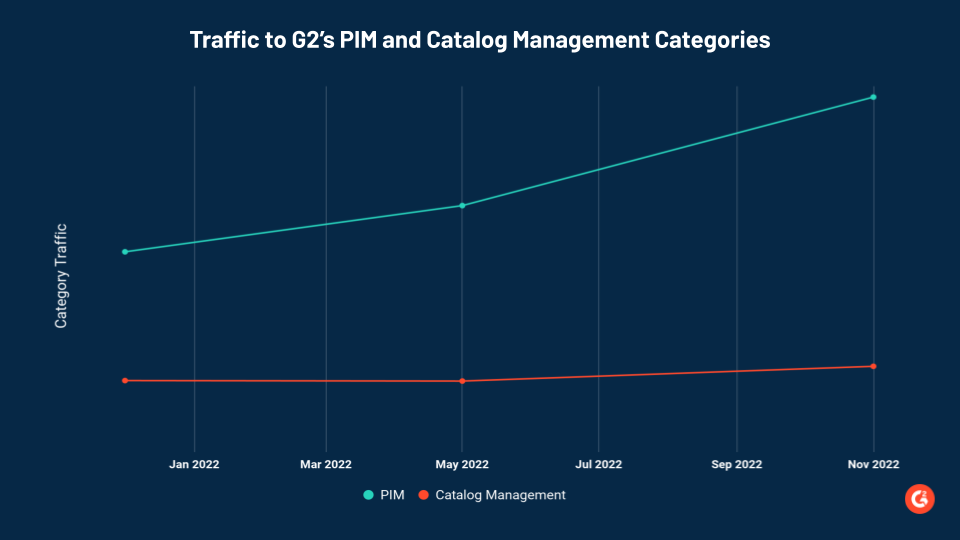This post is part of G2's 2023 digital trends series. Read more about G2’s perspective on digital transformation trends in an introduction from Emily Malis Greathouse, director, market research, and additional coverage on trends identified by G2’s analysts.
Product information management (PIM) will lead the syndication of products for e-commerce
Prediction
Investment in product information management (PIM) systems will be a top priority for e-commerce companies in 2023, with sales and marketing departments struggling to manage product data across a growing number of sales channels.
Why is PIM is becoming critical for e-commerce?
In 2022 Digital Trends, G2’s research principal, Gabriel Gheorghiu, predicted the hybrid shopping trends of consumers and highlighted how e-commerce and in-store retail aren’t mutually exclusive. With multiple sales channels—retail, e-commerce, online marketplace, social media, etc.—in place, it has become increasingly difficult to control a flow of consistent and accurate product information across all channels.
What is Product Information Management (PIM) Software?
PIM software helps manage and enhance the flow of precise product information such as product specification (SKU numbers, weight, and other measurements), product description (Images, videos), product taxonomy, etc., across all selling platforms. It helps collect data from ERP/supplier feed, clean and validate erroneous data in the system and distribute it across all sales and marketing channels.

Source: Factory.hr
The two major trends in e-commerce that will catalyze the growth of PIM are the rising popularity of D2C brands in 2022 and the failure of standard catalog management or legacy systems to manage a large volume of product information.
Brands are less reliant on marketplaces like Amazon and eBay and have been focussing more on direct-to-consumer (D2C) model to sell via marketplaces or the brand’s own website. Standard catalog management features are constantly incapable of handling growing product SKUs, data collection from multiple suppliers, and growing sales channels. A combination of these phenomena is pushing retail and e-commerce companies to actively look for PIM solutions to enhance e-commerce capabilities and stimulate digital selling.
G2 data on PIM and catalog management software market
The Product Information Management (PIM) Software category on G2 has a total of 149 products as of November 2022, out of which 21 products have received five-star ratings from the reviewers. Its total review counts have grown by 42.2% in less than one year, which signifies that business users are actively engaged in implementing and reviewing PIM products.

Traffic to the PIM category has increased by 77.2%, a tremendous growth over the past 12 months. In comparison, the Catalog Management Software category, a subset of PIM and an age-old means of delivering product content, has only grown by 20%. This signals e-commerce companies are actively looking for PIM software as a holistic solution to manage e-commerce product data workflows. The future of the PIM category on G2 is bright, and I anticipate it to grow further as the trend takes shape in 2023.
PIM will lead the innovation journey in e-commerce
Brands and retailers want to provide a seamless shopping experience across multiple sales channels as consumers are trying to have more control over their digital experience. The e-commerce boom in 2023 might be slow due to rising inflation and supply-chain issues, but companies will use this time to strengthen their e-commerce tech stack. Since the concept of multichannel and omnichannel sales is highly relevant now, e-commerce companies will be on the lookout for PIM tools to focus on enhancing product data quality and distribution.
Edited by Jigmee Bhutia



